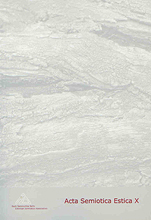Televaatajate ühistoimeline tähendusloome
Television viewers’ collaborative sense-making
Author(s): Siim SorokinSubject(s): Cultural Essay, Political Essay, Societal Essay
Published by: Eesti Semiootika Selts
Keywords: beacon; plotting; sense-making; distributed cognition; distributed intentionality; blogs; television serial; serial form; commentary sections
Summary/Abstract: The empirical source material for the article consists of the commentary sections of television criticism blogs focusing on the serials of U.S. prime time television. These commentary texts are considered as creative outlets for detailing the cognitive aftermath of viewers-commentators' experience of the televisual narrative. Such reciprocal productivity enables the close analysis of both the real-time creation of viewerly meanings and of the sense-making processes conveying them. The analytical emphasis herewith described is fortified by David Herman’s notion of "transpersonal narrative situation". Building on Herman's idea it is claimed that the outcome of viewers-commentators’ collaborative, creative plotting is distinguishable as a consistently developing beacon, which actually lacks central author as such. Hence, this original notion circumscribes a particular collaborative pooling, characterized by its inherent transpersonal and transcommunal amplitude, even though it assembles the idiosyncratic meaning variations circulating within the intersubjective internet space. The concept of beacon, then, to put it broadly, conveys an empirical depiction of contemporary, transmedial, shared television experience. In the first chapter of the article, a general overview of the compositional and reciprocal peculiarities of the serial form per se is proposed. Under closer inspection is serial Lost and its narrative and reciprocal features, thus enabling to construct a useful frame of reference for the following chapter. In chapter two, an appropriate terminology for examining the collaborative sense-making processes of TV-viewers is developed. Lastly, the theoretical contemplation is given form by a close analysis, detailing the formulation and development of beacons, as evidenced by the reception of one particular episode of Lost.
Journal: Acta Semiotica Estica
- Issue Year: 2013
- Issue No: 10
- Page Range: 011-039
- Page Count: 29
- Language: Estonian

